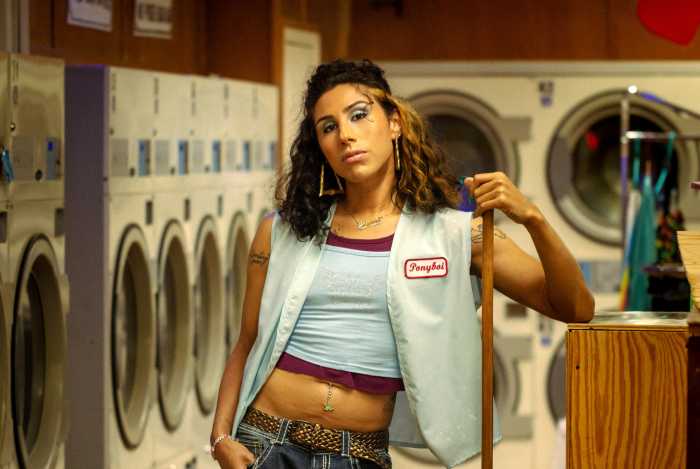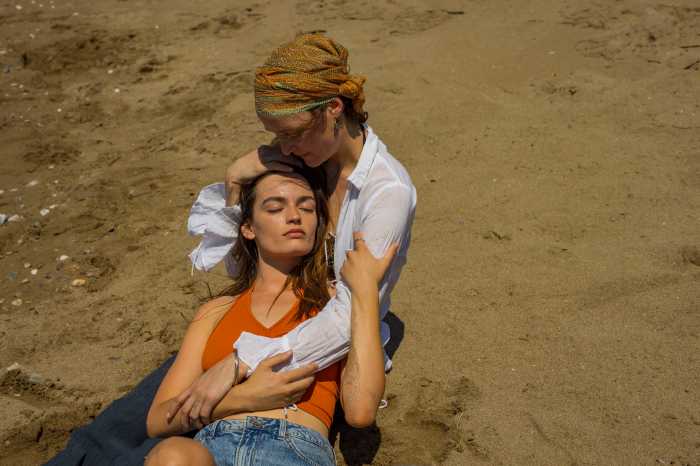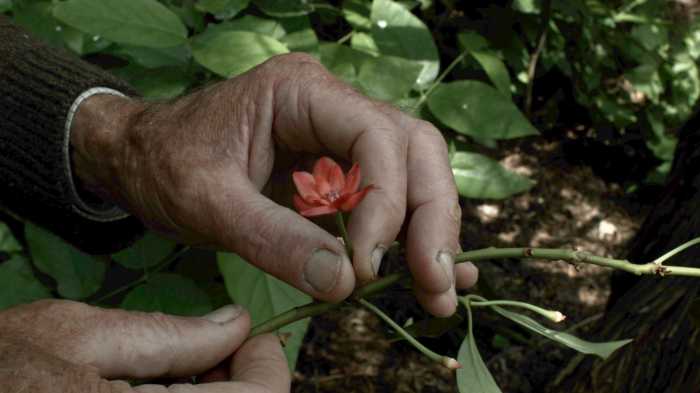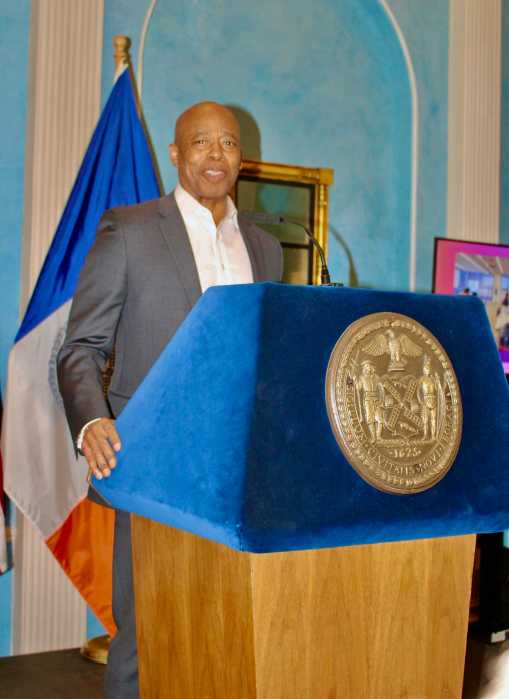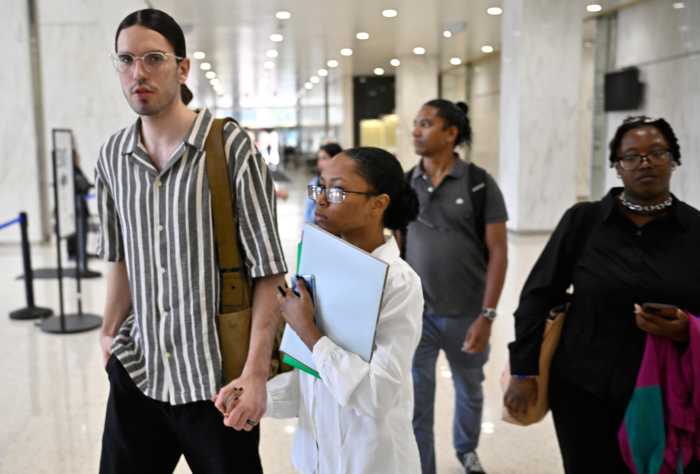“The Color Purple” is on Iteration Number 5.
Its previous iterations, in reverse chronological order, are: a Broadway musical revival in 2015; the original musical in 2005; the blockbuster Hollywood movie starring Whoopi Goldberg and Oprah Winfrey that established the brand in December, 1985; and, the genesis, author Alice Walker’s 1982 novel, told as a series of letters over 40 years, that recounts the tormented emotional and domestic journey of an African American woman, Celie, from abused adolescent to self-possessed middle-ager.
Along this timeline, audiences and critics have sunk both praise and nails into this one drama, taken, at turns, to liberate Black women, denigrate Black men, humiliate the Black nuclear family, excoriate Black misogyny, and ingratiate white viewers on Black suffering.
Every perceived intention and inspiration behind the production of “The Color Purple” has been hashed out and rehashed from every angle. Except, to my surprise, the angle that is inextricably bound to my own reception of “The Color Purple.” In the stretch of history between the movie and the musical, “The Color Purple” became the go-to, feel-good, self-empowerment, you-go place for white gay men.
Not all white gay men, of course. (“All, not all, some, how many, which ones and where?” has always been the impeachable question behind both applause and criticism of portrayals in “The Color Purple.”)
Time and again, white gay men I knew, came across, overheard in public, conversed with in private, outwardly expressed or intimated their appeal for “The Color Purple.” It actually began in the very movie theater that chilly evening in February, 1986, when the movie was released nationwide. I went to see it. I wasn’t much older than its PG-13 rating, and happened to be in Burlington, Vermont, by myself. The cinema was packed; not one seat empty. I and a young woman a few years older than me were the only Black attendees. Nobody, myself included, budged an inch the entire two and a half hours. When it was over, we all filed out somberly, a number of the silver-haired ladies sniffling and dabbing their eyes. Outside, the long line of ticket buyers waiting to enter for the next showing watched in amazement. “Everybody’s crying!” one woman exclaimed. And then it happened: A white gay man directly ahead of me clutched his pearls, emitted a muted cry, and said back, “The ending is just…marvelous!” He’d been waiting to testify from the instant the credits started to roll.
In years to come, I would hear from white gay men that they’d watched the film multiple times, bought it on VHS, and pushed it in whenever they needed a pick-me-up or even a good cry. They knew all the lines. They rehearsed the gestures, the facial expressions. I never asked any which character he saw himself as. The thought didn’t even occur to me, myself, so caught up was I in my own parsing of identity.
The second and final time I saw “The Color Purple” in a cinema was a few weeks after Burlington. On this occasion, the movie theater was in downtown Toronto, and I was accompanying my favorite aunt — my father’s fun, open and accepting little sister — and one of her two daughters, a cousin whose relationship to me was that of the sister I never had. This time, the audience was about a third Black. During the viewing, there was no rapt silence, no contained sniffles. People laughed out audibly, objected verbally, sucked their teeth, hollered out as the film progressed. My cousin and I giggled at this theater-within-theater, like Celie and Nettie themselves, the pair of inseparable siblings whose forced separation lies at the film’s narrative heart. For me, this was a pedagogy of a different stripe: everyday Black viewers responding to an engagingly recounted, seductively shot, compellingly depicted story about everyday Black characters living lives hundreds of miles and tens of decades away from their own lived realities.
The most hilarious moment in the cinema came at the film’s most tender. As Shug Avery, the psychologically tortured female Blues singer who is the lover of Mister, Celie’s horribly abusive husband, is drawing close to Celie to plant a romantic kiss on her lips, the silence in the theater was broken by a woman’s outburst, voice amusingly guttural, “Oh Lord, girl, it ain’t that bad!!” Everyone howled. We could hear in her tone a sense of humor, not horror.
How many times did I hear white gay men speak their truths through iconic lines and scenes from “The Color Purple”?
One man recited, “You betta not tell nobody but God. It would kill yo mama.” In the movie, these words are spoken by Celie’s stepfather as he is robbing her of her newborn baby, a child he himself fathered by rape. The man who spoke it to me was referring to his father’s response to him coming out.
“I’ze married now!” many loved to joke in words of the character Sophia, Oprah Winfrey’s role, when they entered a state-recognized civil partnership or committed relationship. (Marriage equality was made legal nationwide in the United States only in 2015, during the Obama Administration, thanks to a 5-4 Supreme Court ruling.)
“Until you do right by me,” Celie/white gay ventriloquist said, “Everything you think about is gon’ crumble.”
But, as these men cried and cozied up to Celie and Sophia, what feelings, I came to ponder, might they have had towards Mister, the bestial Black man from whose belt and brutality they were vicariously escaping? Mister, after all, was a representation that slid easily off the screen onto the street, where it met me, if in appearance alone.
Actor Danny Glover was 39 when he played the role of Mister. Whereas no woman’s body in the film is exposed, director Stephen Spielberg insisted upon exposing Glover’s. We see his taut torso and firm glutes when he is hopping around, getting himself all spruced up and citified for Shug’s Easter visit. I watched him through Celie’s eyes watching him.
To both their disappointment, when Shug Avery does pull up, she has her handsome new husband, Grady, in tow. But, I got a rise out of the scene that follows wherein Mister and Grady get drunk together while painting Easter eggs with the children. Inebriated, they turn to each other and lay hands on each other, stroking each other’s faces in a homosociality that could go in any direction at any moment.
“To all the evil and all the love,” Mister tells Grady. They toast with two half-painted eggs, then Mister smashes his on Grady’s forehead flirtatiously and rubs his cheeks.
“I like you, boy,” Mister says.
“I like you, too,” inebriated Grady responds, pawing Mister.
“You’re my kind of man,” Mister shoots back before the scene ends.
Nicholas Boston, Ph.D., is a professor of media sociology at the City University of New York-Lehman College.


